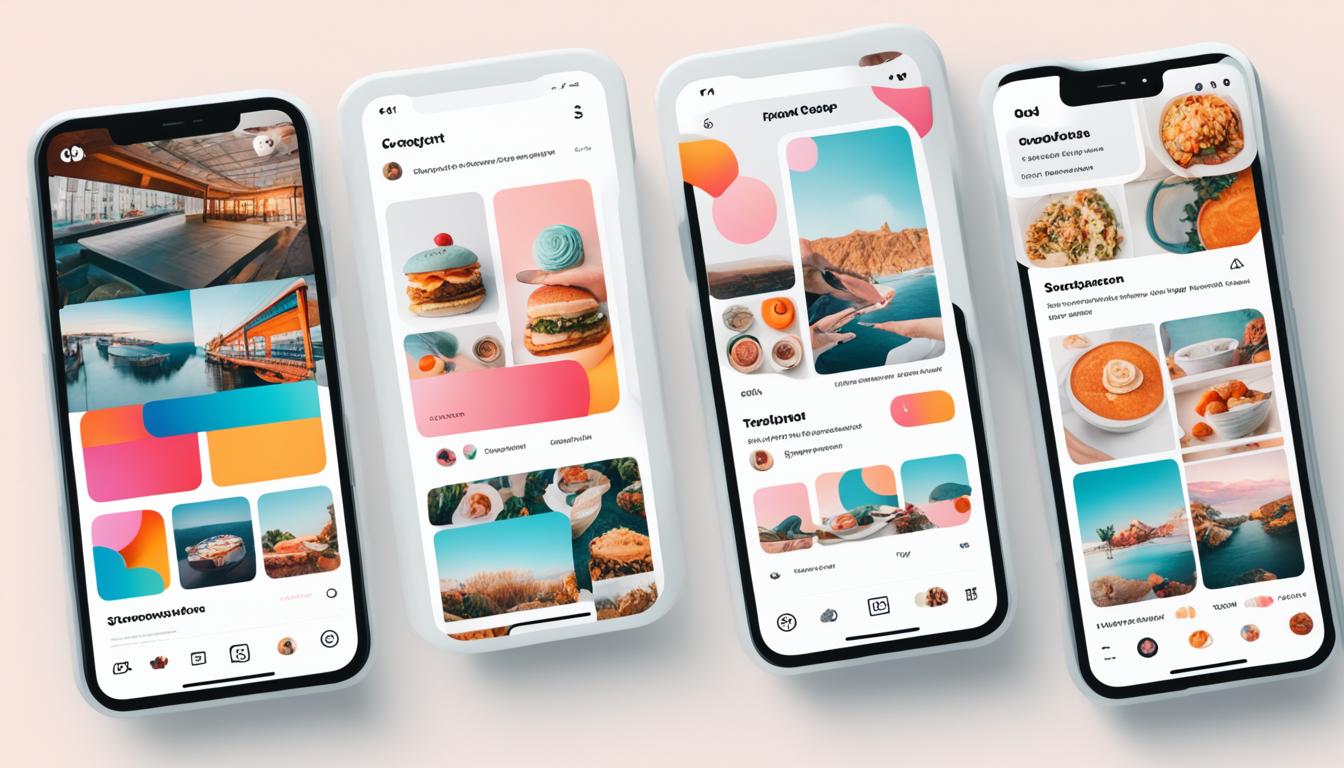User-Generated Content (UGC): What It Is + Why It Matters
Unlocking the Power of User-Generated Content
Did you know that 26% of consumers find User-Generated Content (UGC) the most engaging type of content in their social feeds¹? This fact shows how important UGC is in social media marketing and making brands more real. Customers want genuine experiences, making UGC a key way to keep them engaged and build trust.
UGC is content made by customers for a brand and shared online. It can be photos, videos, reviews, or testimonials. With 68% of consumers following brands on social media for updates on new products, UGC is vital for marketing¹.
The effect of UGC is huge. For example, Nutrisense saw a 45% increase in social media engagement with UGC. They grew their community to over 130,000 followers¹. This shows how UGC can help brands get noticed and keep customers loyal.
Exploring UGC can change how you market on social media. It's cost-effective and makes brands seem more real. UGC helps brands connect with their audience in a meaningful way.
Key Takeaways
UGC is the most engaging content type for 26% of consumers
68% of consumers follow brands on social media for product updates
UGC can significantly boost social media engagement and follower growth
Authentic, customer-created content builds trust and brand loyalty
UGC strategies can be more cost-effective than traditional marketing approaches
Implementing UGC can lead to improved customer engagement and brand awareness
Understanding User-Generated Content
User-generated content (UGC) has changed the game in digital marketing. Let's dive into what it means, its different types, and its impact on marketing.
Definition of UGC
UGC is content made by people, not brands. This includes reviews, photos, videos, and posts on social media. It's a big deal because 85 percent of people trust UGC more than content made by brands².
Types of User-Generated Content
UGC has many forms:
Customer reviews and testimonials
Social media posts and comments
Photos and videos featuring products
Blog posts about brand experiences
Each type helps build trust and engagement with brands.
Evolution of UGC in Digital Marketing
UGC has evolved from simple reviews to a key part of digital marketing. Today, 93% of marketers believe consumers trust UGC more than brand content³². This shows how consumer habits and marketing trends are changing.
Brands like GoPro use UGC well. Their top YouTube videos, all made by users, have over 400 million views⁴. This shows UGC's power to boost engagement and brand awareness.
As digital marketing grows, UGC remains vital. It's not just about making content. It's about creating communities and real connections between brands and people²³⁴.
The Power of Authenticity in UGC

User-generated content (UGC) is key to real marketing today. People want true experiences and real connections with brands. UGC gives them that, helping to build trust with brands.
Studies show that UGC feels 2.4 times more real than brand-made content⁵. This is key because 90% of people look for authenticity when picking brands to support⁵.
UGC works like modern word-of-mouth. Seeing others enjoy products makes people want them more and boosts buying chances⁵. This trust from others is priceless for brands.
"User-generated content is the most authentic, engaging, and cost-effective form of marketing available to brands today."
Brands like Lululemon and Coach use UGC well. Lululemon got over 2 million views and a million likes on Instagram with a hashtag campaign. Coach got over 26,000 posts from customers sharing their product experiences⁵.
To use UGC well, brands can:
Start branded hashtag campaigns
Run contests and giveaways
Encourage customer content sharing
Engage with clients on social media
Leverage influencers for niche targeting
Incentivize staff to create UGC⁶
By using UGC, brands get lots of real content that connects with people and boosts engagement. This leads to stronger trust with consumers and a more real marketing approach. This makes brands stand out in today's digital world.
Benefits of User-Generated Content for Brands
User-generated content (UGC) is a big win for brands wanting to lift their marketing game. Let's dive into how UGC can make brands more credible, boost marketing returns, and keep customers coming back.
Increased Trust and Credibility
UGC is a key player in building trust with your brand. When customers share their stories, it shows real-life proof that speaks volumes to others. In fact, 84% of people let UGC guide their buying choices⁷. This kind of word-of-mouth is powerful, as 90% of shoppers check out reviews before they buy⁸.
Cost-Effective Marketing Strategy
Using UGC can really pay off for your marketing budget. It's cheaper than traditional ads, as your customers become your best salespeople. UGC is 85% better at driving sales than professional content, which could mean a 95% jump in website visits7. For example, Salsa Jeans saw a 17.27% sales boost during the pandemic by tapping into UGC⁸.
Enhanced Customer Engagement
UGC creates a community feel and gets people talking, making them more loyal to your brand. It lets brands have real talks with their fans. User-generated content shows you're open to hearing from customers, building stronger bonds⁹. This leads to real sales, with 91% of shoppers swayed by social media content⁸.
"UGC is the modern word-of-mouth advertising, driving consumer trust and confidence through its authenticity."
By tapping into UGC, brands can start a cycle of more engagement, trust, and loyalty. This leads to better marketing results and stronger ties with customers.
How UGC Influences Consumer Behavior
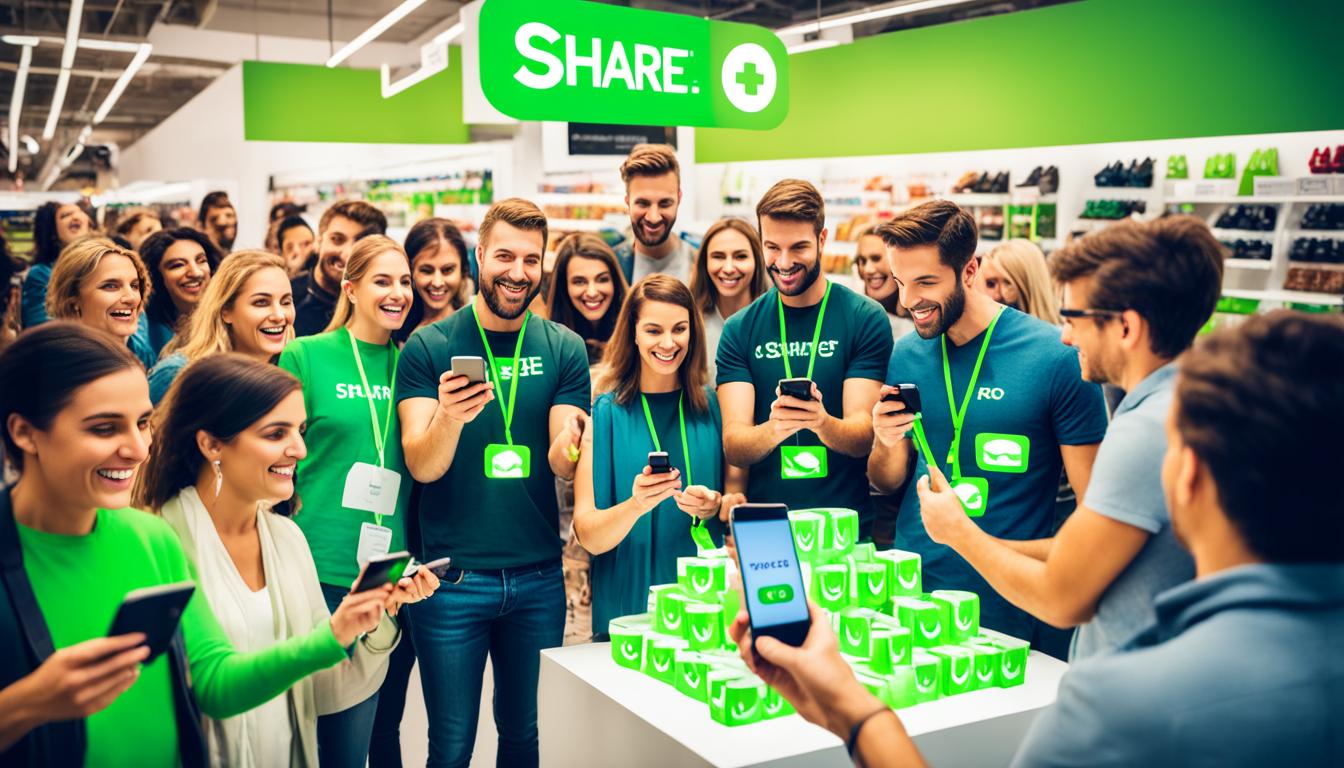
User-generated content (UGC) is key in shaping how we think and decide to buy things. In today's world, UGC acts as a strong social proof. It greatly affects our choices when buying things.
UGC deeply affects how we act as consumers. Most people in the U.S. find reviews online very useful for shopping online. This shows how important what others say is in making decisions¹⁰. It shows a shift in trust from what brands say to what real people share.
But UGC does more than just reviews. Ads with UGC get 73% more positive comments than regular ads. Also, 31% of people remember UGC ads better because they seem real¹⁰. This means UGC helps increase engagement by 50%¹⁰.
UGC creates strong emotional bonds with consumers. People find UGC 85% more powerful than what brands say. And 84% of young people prefer brands that show real customer experiences in ads¹⁰. This emotional connection builds trust, loyalty, and affects what we buy¹¹.
UGC Impact Percentage
Increase in positive comments 73%
Increase in engagement rates 50%
Influence compared to brand content 85%
Young adults more likely to engage 84%
Brands use UGC to connect with customers in a real way. This creates a chain reaction that changes how we act, builds trust, and guides our buying choices¹¹. The role of UGC in shaping our thoughts and choices is clear. It's a key tool for marketers today.
Instagram User Generated Content UGC: A Game-Changer
Instagram has turned into a key spot for brands to use user-generated content (UGC). With over a billion users every month and half a billion daily, it's a treasure trove for Instagram marketing strategies¹².
Instagram's Role in UGC Marketing
Instagram's focus on visuals makes it ideal for showing off UGC. Its high engagement rates boost the impact of content made by users¹². Brands gain more awareness and trust as UGC spreads far and wide¹³.
Best Practices for Instagram UGC
To make the most of UGC on Instagram:
Create branded hashtags for easy content discovery
Run contests to encourage content creation
Feature customer photos to build community
Engage authentically with followers
Remember, 79% of customers say UGC affects their buying choices¹². Being real is crucial - 30% of millennials unfollow brands that seem fake¹⁴.
Case Studies of Successful Instagram UGC Campaigns
Successful UGC campaigns on Instagram bring big wins. Content made by users gets 6.9 times more attention than what brands make¹⁴. Let's dive into some top campaigns:
Brand - Campaign
Lululemon: #thesweatlife
LaCroix: #LiveLaCroix
Aerie: #AerieReal
Results
Lululemon: Increased brand awareness, community building
LaCroix: Higher engagement, diverse content
Aerie: Boosted authenticity, customer loyalty
These campaigns show how hashtag campaigns and visual UGC can change the game for Instagram marketing. By 2033, 78% of online content will be made by users, showing UGC's growing role¹²¹³¹⁴.
Leveraging UGC Across Different Social Media Platforms
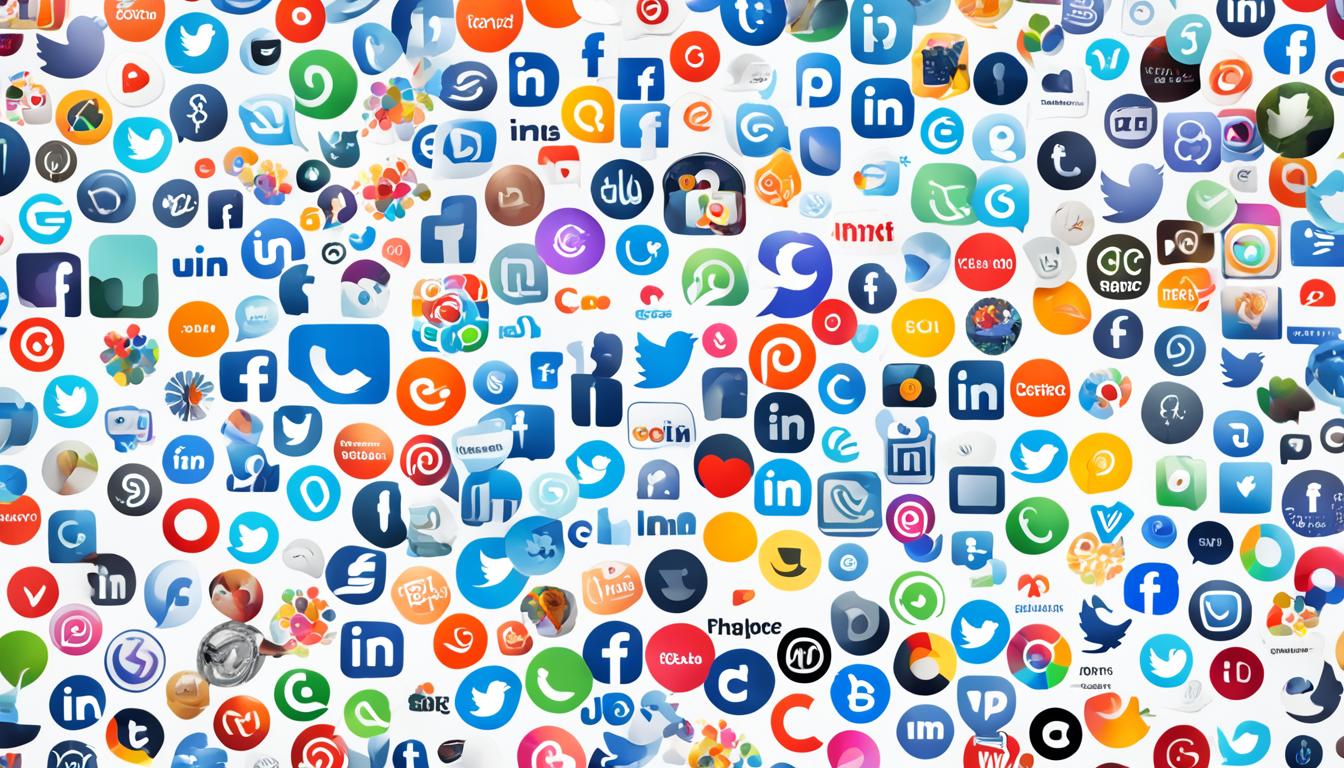
User-generated content (UGC) is key to great marketing across platforms. Brands use omnichannel UGC to reach people on various social media. This strategy boosts brand visibility and builds real connections with customers.
UGC greatly influences how people act. A huge 92% trust content made by users more than what brands create. And 79% say UGC helps them decide what to buy¹⁵¹⁶. This trust leads to real results, like a 29% increase in web conversions¹⁵.
Using a strong social media plan with UGC can bring big wins. Brands see up to a 500% increase in Instagram followers by using UGC well¹⁵. Also, UGC ads are 50% cheaper than traditional ads, making them great for any business size¹⁶.
To make the most of your UGC, try these tips for each platform:
Instagram: Ask customers to post photos of your products with branded hashtags.
TikTok: Start challenges that get users making fun videos.
Facebook: Make areas for customers to share reviews and testimonials.
Twitter: Join live chats and share positive customer stories.
For the best UGC results, be consistent across platforms but adjust your content for each one. Using UGC on many social media channels helps create a strong brand experience. This connects with your audience and brings real results. Learn more about making the most of UGC to improve your brand's online image.
Legal Considerations and Best Practices for UGC
User-generated content (UGC) is a strong marketing tool but has legal hurdles. Brands need to handle UGC legal issues carefully. This ensures they protect themselves and respect content rights.
Copyright and Ownership Issues
Brands must grasp copyright ownership and platform licenses when using UGC. Getting the right permissions boosts content security and prevents disputes¹⁷. In the U.S., the FTC demands full disclosure of any big connection between content creators and brands¹⁸.
Obtaining Proper Permissions
Direct requests, adding usage terms in sign-ups, and hashtag campaigns work well for getting UGC rights¹⁷. Companies can use licenses to get the right to use and share UGC, dodging copyright problems¹⁹. Keeping detailed records of permissions and talks is key to avoiding legal issues¹⁸.
Creating Clear UGC Guidelines
It's vital to set clear brand guidelines for UGC. This ensures legal compliance, manages creators' rights, and keeps things fair for everyone¹⁷. Guidelines should cover privacy, content moderation, and follow laws like CCPA, PIPEDA, and GDPR¹⁹.
UGC Legal Consideration Best Practice
Copyright Infringement: Obtain explicit permission
Privacy Concerns: Comply with data protection laws
Disclosure Requirements: Clearly state brand relationships
Content Accuracy: Verify UGC before use
By tackling these legal points and following best practices, brands can use UGC well while cutting risks. Always keep up with international legal rules, as they differ by area¹⁸.
Measuring the Impact of User-Generated Content
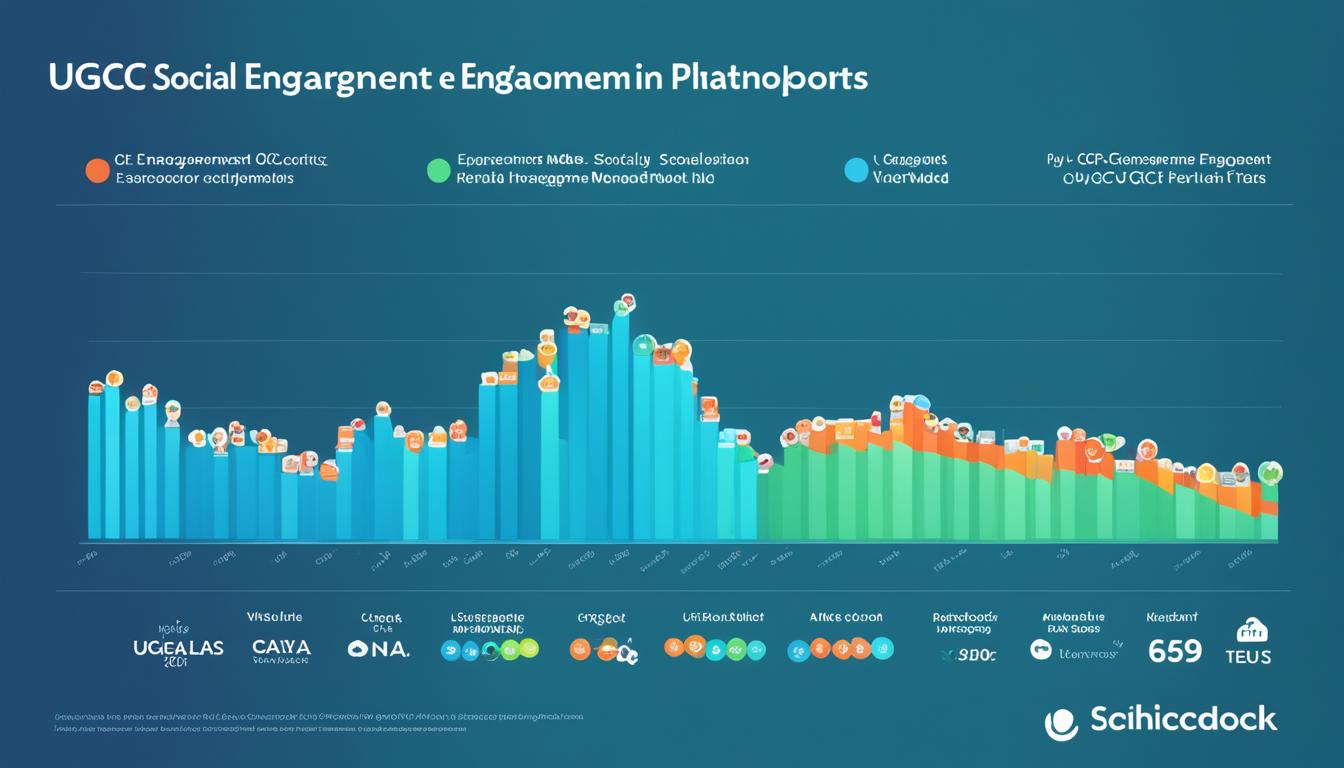
It's key to track your UGC campaigns' success for better marketing. Use UGC metrics and social media analytics to see how well they work. This helps you understand your return on investment.
Reach and impressions show how visible your UGC is. Reach tells you how many unique viewers saw it. Impressions count the total times it was shown. Looking at these numbers helps you spot trends and see what works best²⁰.
Likes, comments, and shares tell you how much your audience connects with your content. These actions show how emotionally tied they are to your UGC. Keeping an eye on these helps you understand how well your UGC engages people²⁰.
Conversion rates are important for seeing how UGC affects your sales. Compare the number of sales to how many people saw the UGC to figure this out²⁰. Research shows that UGC can boost sales by 100.6%. Reviews alone can even double sales²¹.
UGC Element Conversion Lift
Reviews 108.3%
Q&A Content 194.2%
User-generated Imagery 106.3%
Keep an eye on these UGC metrics and use social media analytics tools to improve your strategies. Remember, 87% of businesses use UGC in their marketing. It's a key part of today's digital marketing²⁰²¹²².
Encouraging and Incentivizing UGC Creation
Brands are using user-generated content (UGC) to increase engagement and trust. Over 80% of consumers trust UGC more than traditional ads. It's key to get your audience to make content²³.
Contests and Challenges
Brand challenges are great for getting UGC. Fitbit uses challenges to boost engagement and build community²³. Coca-Cola's 'Share a Coke' campaign in over 50 countries got a lot of UGC²⁴.
Hashtag Campaigns
Branded hashtags can start UGC. Red Bull's #PutACanOnIt campaign got around 10,000 original images on Twitter and Instagram quickly²⁴. This method increases engagement and helps a brand reach more people²⁵.
Rewards and Recognition Programs
Rewards are key to motivating UGC. Saying thanks to fans for their work can make them want to make more content for you²⁴. You can add UGC to challenges with automatic rewards or manual checks before showing it on customer profiles²⁵.
Over 50% of consumers think brands should give guidelines for reviews or other content²⁴. Clear prompts and meaningful UGC incentives can help overcome hesitation. This ensures a flow of new, real content for your online spots²³²⁴²⁵.
Integrating UGC into Your Overall Marketing Strategy
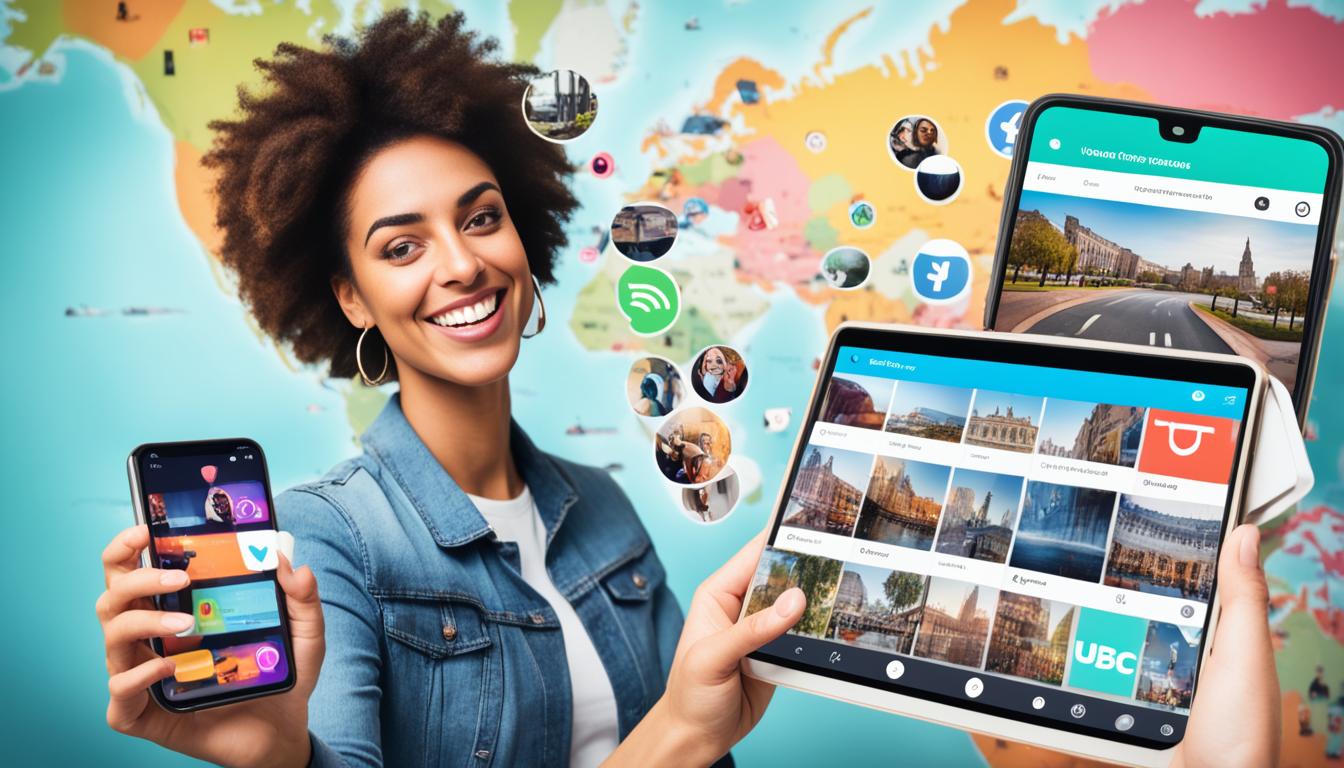
Adding user-generated content (UGC) to your marketing plan boosts your brand's realness and gets people more involved. Since 92% of people like UGC more than perfect ads, it's a hit with audiences²⁶. Using UGC on different platforms helps make your brand feel more connected to your customers.
Using UGC in a customer-focused marketing plan brings big wins. Campaigns with UGC see a 29% jump in web sales, showing its power in getting results²⁶. This matches up with 79% of shoppers saying UGC helps them make buying choices²⁷.
Put UGC on your website, emails, and social media
Make special pages for customer-made content
Use UGC to boost your marketing efforts
Using integrated marketing with UGC can cut costs and work less hard than old-school methods. UGC also brings in more return on investment (ROI) than traditional content²⁷.
UGC Integration Method Impact
Website Integration: Boosts trust and sales
Social Media Showcases: Increases engagement and loyalty
Email Marketing Inclusion: Better opens and clicks
By using UGC in your marketing, you're not just promoting your brand. You're building a community. With 62% of millennials wanting to connect with brands on social media, UGC is a real way to reach them²⁸. A smart UGC plan can increase brand engagement by 28%, building stronger ties with customers²⁷.
Overcoming Challenges in UGC Implementation
Brands face challenges when they use user-generated content (UGC). UGC adds authenticity and trust, but it also has its downsides. Quality control is a big issue, as the content's accuracy and professionalism vary²⁹.
To overcome these problems, brands need strong strategies. Clear guidelines help keep the content quality high while still letting creativity shine³⁰. Using automated tools for moderation can make reviewing content faster and keep it in line with the brand²⁹.
Keeping an eye on UGC quality is key for maintaining brand consistency. It's important to pick content that fits your brand's look and values³⁰. Finding the right balance between being real and staying true to your brand is essential for successful UGC campaigns.
Challenge Solution
Variable content quality: Establish clear guidelines
Moderation issues: Implement efficient review processes
Brand consistency: Curate content aligned with brand values
Even with these challenges, UGC is a strong tool. It helps increase organic reach, builds trust, and gets people more involved³⁰. By facing these challenges directly, brands can make the most out of UGC in their marketing.
The Future of User-Generated Content

UGC trends are changing fast, changing how brands talk to their audience. New things are coming for user-generated content and its role in marketing.
Emerging Trends in UGC
Video content is big in UGC, with TikTok and Instagram Reels leading the way³¹. Short videos grab attention and give brands new ways to connect. TikTok, with over 1 billion users a month, shows its power for UGC campaigns³².
Podcasts are becoming popular, offering e-commerce brands a new way to share their story and connect with people³³. This format lets for deeper storytelling and building personal connections.
AI and UGC: A New Frontier
AI in marketing will change how we make and pick UGC. Machine learning will suggest personalized content, boost SEO, and spark new ideas³². AI and UGC together will give brands more relevant and engaging experiences.
Predictions for UGC in the Coming Years
The future of social media will bring more AR and VR into UGC. These techs will make experiences feel real, letting users try out products and join brand stories³³.
Shoppable UGC is another big thing to watch. It makes user content part of shopping, building trust with customers³³. This works because 47% of millennials and 36% of baby boomers buy more after seeing UGC³².
UGC Trend Impact on Marketing
Video Content: Increased engagement
AI Integration: Personalized experiences
AR/VR Experiences: Immersive brand storytelling
Shoppable UGC: Streamlined purchase journey
Consumer Behavior
Video Content: Higher content consumption
AI Integration: More relevant interactions
AR/VR Experiences: Enhanced product visualization
Shoppable UGC: Increased trust in buying decisions
As the future of user-generated content comes, brands need to stay quick and adapt to these new trends to stay ahead online.
Case Studies: Brands Winning with UGC
User-generated content (UGC) is a key tool for brands to increase engagement and get results. Let's look at some UGC success stories. Coca-Cola's "Share a Coke" campaign went global, reaching 80 countries, showing how well personalized UGC works³⁴.
Instagram has changed the game for UGC, with over 500 million users every month. This gives brands a huge audience for their stories³⁵. Calvin Klein's #MyCalvins contest got 190,000 photos from users, proving Instagram's power for connecting with customers³⁴. Even B2B brands like IBM use UGC well; their video with Serena Williams got over 7,700 views, showing UGC's broad appeal³⁵.
UGC clearly boosts brand awareness. A huge 92% of marketers say it makes products more known³⁶. For example, NAVY Hair Care saw a 264% jump in repeat visits and engagement after using UGC in their marketing³⁶. These stories show how UGC can greatly increase brand visibility and loyalty.
FAQ
What is user-generated content (UGC)?
UGC is content made by customers for a brand and shared online. It includes things like photos, videos, and reviews. This content helps show what people think about a brand.
Why is UGC important for brands?
UGC makes brands seem more real and builds loyalty. It's also cheaper than traditional ads. This kind of content boosts trust and gets people more involved with the brand.
What are the benefits of UGC for brands?
UGC helps build trust and is a budget-friendly way to market. It gets customers more engaged and acts as proof that people like the brand. It also changes how people think about buying things.
How does UGC influence consumer behavior?
UGC makes people trust a brand more. It also makes them more likely to choose it. This is because it shows the brand is real and true to its values.
How can brands leverage UGC on Instagram?
Brands can use UGC on Instagram by making special hashtags, running contests, and sharing customer photos. This approach boosts brand awareness and makes users feel part of a community.
How can brands use UGC across different social media platforms?
Each social media site has its own way to use UGC. Brands should match their UGC plans with each site's features and what its users like. This helps use each platform's strengths well.
What legal considerations should brands keep in mind when using UGC?
Brands need to think about copyright and who owns the content. Getting the right permissions and setting clear rules for UGC is key. This helps avoid legal problems and keeps the content in line with the brand.
How can brands measure the impact of their UGC efforts?
Brands can check how well their UGC is doing by looking at things like how many people are engaging, how far the content goes, and how it leads to sales. They can use tools to track these things.
How can brands encourage and incentivize UGC creation?
Brands can get more UGC by running contests, challenges, and hashtag campaigns. Offering rewards and giving clear instructions on what to make also helps.
How can brands integrate UGC into their overall marketing strategy?
Brands can use UGC in many places, like on their websites, in emails, and on social media. This makes their marketing stronger and more consistent, giving a unified brand experience.
What challenges might brands face when implementing UGC?
Brands might struggle with keeping the content good, keeping the brand consistent, dealing with bad content, and making sure it's real but still fits the brand.
What are some emerging trends in the UGC space?
New trends include more video content, especially short videos. AI is also playing a bigger role in picking and analyzing content. We might see more immersive experiences like AR and VR made by users too.
Source Links
User-generated content (UGC): what it is and why it matters for your brand
The Power of User-Generated Content for Consumer Trust and Brand Loyalty — Neuroscience Of
Council Post: Harnessing The Power Of User-Generated Content (UGC)
7 Benefits of User-Generated Content - What's In It for Your Brand? - Flaminjoy
How User Generated Content Influences Consumer Behavior - FasterCapital
User-Generated Content on Instagram [The Ultimate Guide] - Billo
Discover Instagram User-Generated Content: Goldmine for Brands
A social media manager’s guide to user-generated content (UGC) with examples | HeyOrca
User Generated Content Permission, Rights, Laws & Legal Issues
Legal Considerations for Using User-Generated Content in Ads
User-Generated Content on Social Media: Avoiding Legal Issues - TermsFeed
Maven: Authenticity and Engagement: The Winning Combo of User-Generated Content
How to Curate and Share User-Generated Content on Social Media to Promote Your Brand
How to Utilize User-Generated Content in Your Marketing Strategy
User Generated Content Strategy: Creating a strategy that converts
The Future of User-Generated Content: Trends and Predictions for the Rest of 2023
Exploring the Top 5 Trends Shaping the Future of User-Generated Content (UGC) in 2024
20 Inspiring User-Generated Content Examples And Why They Work
10 User Generated Content Campaigns That Actually Worked [+Expert Insights]
Sai Rahul
Jul 25, 2024
Latest posts
Discover other pieces of writing in our blog



